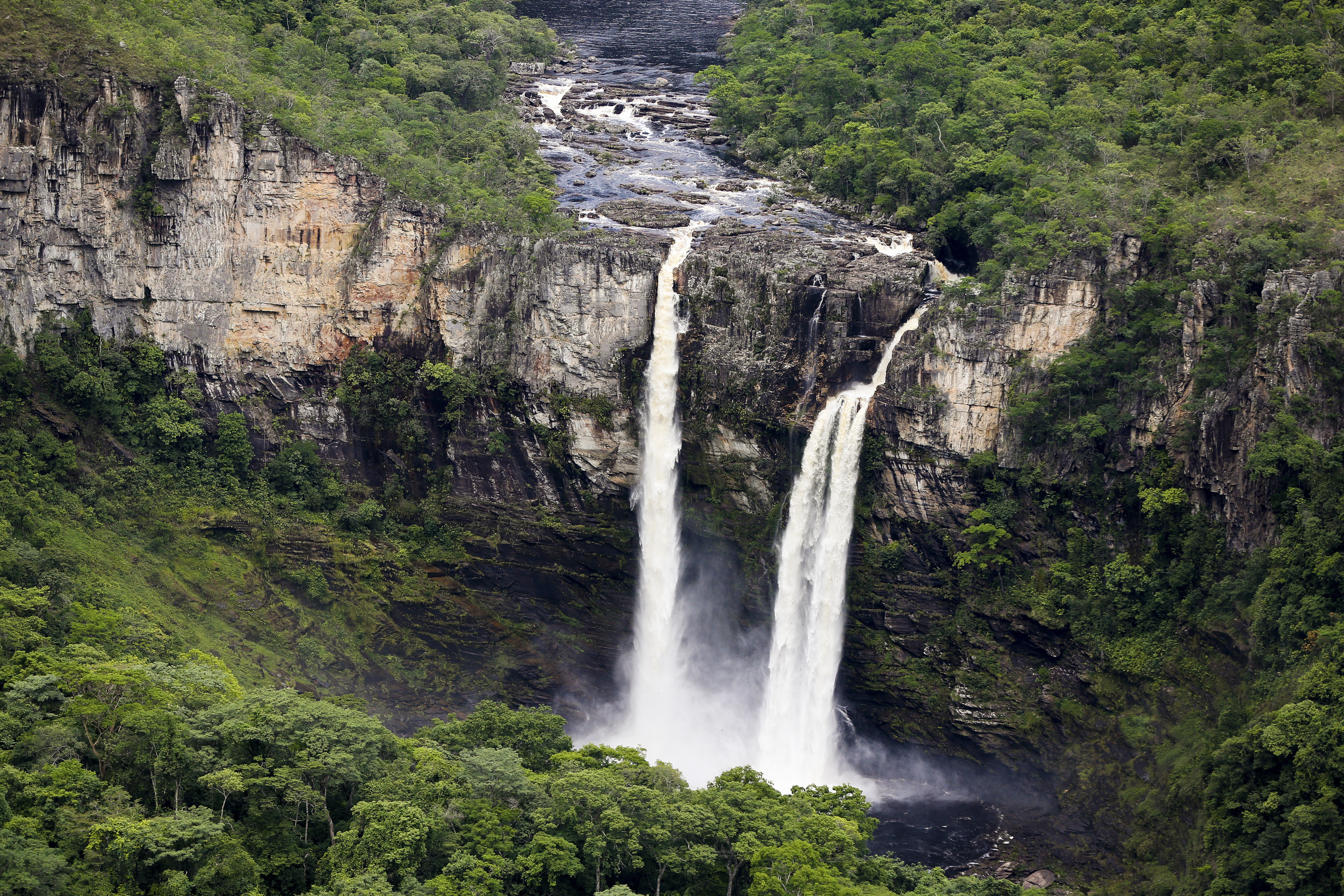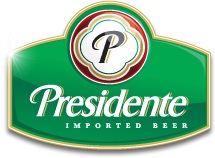|
Geography Of Paraguay
Paraguay is a country in South America, bordering Argentina, Bolivia and Brazil. The Paraguay River (Spanish: ''Río Paraguay'') divides the country into strikingly different eastern and western regions. Both the eastern region (officially called Eastern Paraguay, ''Paraguay Oriental'', and known as the Paraneña region) and the western region (officially Western Paraguay, ''Paraguay Occidental'', and known as the Chaco) gently slope toward and are drained into the Paraguay River, which separates and unifies the two regions. With the Paraneña region reaching southward and the Chaco extending to the north, Paraguay straddles the Tropic of Capricorn and experiences both Subtropics, subtropical and Tropics, tropical climates. Borders Paraguay borders on three substantially larger countries: Bolivia, Brazil, and Argentina. The country has three tripoints: Hito Esmeralda, Argentina-Bolivia-Paraguay, Bolivia-Brazil-Paraguay and Triple Frontier, Paraguay-Argentina-Brazil. The definitio ... [...More Info...] [...Related Items...] OR: [Wikipedia] [Google] [Baidu] |
Paraná River
The Paraná River ( ; ; ) is a river in south-central South America, running through Brazil, Paraguay, and Argentina for some ."Parana River". Encyclopædia Britannica. Encyclopædia Britannica Online. Encyclopædia Britannica Inc., 2012. Web. 26 May. 2012 https://www.britannica.com/EBchecked/topic/443063/Parana-River . "Rio de la Plata". Encyclopædia Britannica. Encyclopædia Britannica Online. Encyclopædia Britannica Inc., 2012. Web. 26 May. 2012 https://www.britannica.com/EBchecked/topic/463804/Rio-de-la-Plata Among South American rivers, it is second in length only to the Amazon River. It merges with the Paraguay River and then farther downstream with the Uruguay River to form the Río de la Plata and empties into the Atlantic Ocean. The first European to go up the Paraná River was the Venetian explorer Sebastian Cabot (explorer), Sebastian Cabot, in 1526, while working for Spain. A drought hit the river in 2021, causing a 77-year low. Etymology In eastern South Amer ... [...More Info...] [...Related Items...] OR: [Wikipedia] [Google] [Baidu] |
Pantanal
The Pantanal () is a natural region encompassing the world's largest tropical wetland area, and the world's largest Flooded grasslands and savannas, flooded grasslands. It is located mostly within the Brazilian state of Mato Grosso do Sul, but it extends into Mato Grosso and portions of Bolivia and Paraguay. It sprawls over an area estimated at between . Various subregional ecosystems exist, each with distinct hydrological, geological, and ecological characteristics; up to 12 of them have been defined.Susan Mcgrath, photos by Joel Sartore (August 2005) "Brazil's Wild Wet", ''National Geographic Magazine''. Roughly 80% of the Pantanal floodplains are submerged during the rainy seasons, nurturing a biologically diverse collection of aquatic plants and helping to support a dense array of animal species. Etymology The name "Pantanal" comes from the Portuguese word and the Spanish word ''pantano'' that mean "swamp", "wetland", "bog", "quagmire", or "marsh" plus the suffix ''-al'', ... [...More Info...] [...Related Items...] OR: [Wikipedia] [Google] [Baidu] |
Humid Chaco
The Humid Chaco ( Spanish: ''Chaco Húmedo'' or ''Chaco Oriental'') is a tropical grasslands, savannas, and shrublands ecoregion in South America. It lies in the basin of the Paraná River, covering portions of central Paraguay and northern Argentina, and with a small portion of southwestern Brazil and northwestern Uruguay. The natural vegetation is a mosaic of grasslands, palm savanna, and forest. Geography The Humid Chaco lies in the lowlands of the Paraná river and its tributaries, including the Paraguay River. It is bounded on the west by the Dry Chaco, a semi-arid region of dry forests and savannas. The Alto Paraná Atlantic forests lie to the east, and the Cerrado grasslands to the northeast. It borders on some large flooded grasslands and savannas, including the Paraná flooded savanna along the lower Paraná and Paraguay rivers, the Pantanal to the north, and the Southern Cone Mesopotamian savanna to the southeast between the Paraná and Uruguay rivers. The topograp ... [...More Info...] [...Related Items...] OR: [Wikipedia] [Google] [Baidu] |
Cerrado
The Cerrado () is a vast ecoregion of Tropics, tropical savanna in central Brazil, being present in the states of Goiás, Mato Grosso do Sul, Mato Grosso, Tocantins, Maranhão, Piauí, Bahia, Minas Gerais, São Paulo (state), São Paulo, Paraná (state), Paraná and the Federal District (Brazil), Federal District. The core areas of the Cerrado biome are the Brazilian highlands – the ''Planalto''. The main habitat types of the Cerrado consist of forest savanna, wooded savanna, park savanna and grass, gramineous-woody savanna. The Cerrado also includes savanna wetlands and gallery forests. The second largest of Biomes in Brazil, Brazil's major habitat types, after the Amazon rainforest, Amazonian rainforest, the Cerrado accounts for a full 21 percent of the country's land area (extending marginally into Paraguay and Bolivia). About 75% of the Cerrado’s 2 million km2 is privately owned. Vast amounts of research have shown that the Cerrado is one of the richest of all tropi ... [...More Info...] [...Related Items...] OR: [Wikipedia] [Google] [Baidu] |
Gran Chaco
The Gran Chaco or simply Chaco is a sparsely populated, hot and semiarid lowland tropical dry broadleaf forest natural region of the Río de la Plata basin, divided among eastern Bolivia, western Paraguay, northern Argentina, and a portion of the Brazilian states of Mato Grosso and Mato Grosso do Sul, where it is connected with the Pantanal region. This land is sometimes called the Chaco Plain. The ecoregion has an estimated population of 3,985,000. Toponymy The name Chaco comes from the Quechua word meaning "hunting land", an indigenous language from the Andes and highlands of South America, and comes probably from the rich variety of animal life present throughout the entire region. Geography The Gran Chaco is about 647,500km2 (250,000 sq mi) in size, though estimates differ. It is located west of the Paraguay River and east of the Andes, and is mostly an alluvial sedimentary plain shared among Paraguay, Bolivia, and Argentina. It stretches from about 17 to 3 ... [...More Info...] [...Related Items...] OR: [Wikipedia] [Google] [Baidu] |
Alto Paraná Atlantic Forests
The Alto Paraná Atlantic forests, also known as the Paraná-Paraíba interior forests, is an ecoregion of the tropical moist forests biome, and the South American Atlantic Forest biome. It is located in southern Brazil, northeastern Argentina, and eastern Paraguay. Geography The Alto Paraná Atlantic forests are an interior extension of the coastal forests, extending across the southern portion of the Brazilian Highlands. The ecoregion extends from the mouth of the Paraíba do Sul River eastward along the Paraíba valley lying behind the coastal Serra do Mar, and further eastward and northward along the basin of the Paraná River and its tributaries, forming a complex mosaic with the surrounding ecoregions. ;States, provinces, and departments The ecoregion covers portions of the Brazilian states of Minas Gerais, São Paulo, Goiás, Mato Grosso do Sul, Paraná, Santa Catarina, and Rio Grande do Sul, the Argentine province of Misiones, and the Paraguayan departments of Alto P ... [...More Info...] [...Related Items...] OR: [Wikipedia] [Google] [Baidu] |
Presidente Hayes Department, Paraguay - Panoramio
Presidente is a brand of Pilsner beer that is owned and produced by Cervecería Nacional Dominicana (CND) at several breweries in the Dominican Republic. In addition to domestic consumption in the Dominican Republic, Presidente is exported to the United States, Panama, Honduras, Spain, Germany, Switzerland, Italy, Andorra, Aruba, Cuba, Curaçao, Antigua, Belize, Martinique, Guadeloupe, Turks and Caicos, The Bahamas, Saint Martin, British Virgin Islands and Puerto Rico. Varieties include Presidente (5.0% ABV), Presidente Light (4.3 ABV), Presidente Black (6.0% ABV), The One (4.7% ABV), Bohemia (5.0% ABV), Bohemia Light (3.8% ABV), Bohemia Especial (7.2% ABV). Bohemia Especial Light (4.3 ABV), Bohemia Light (4.3% ABV) and Brahma (3.8% ABV.) History In 1929, U.S. industrialist Charles H. Wanzer with other business partners founded the brewery and started brewing the iconic Dominican beer, Presidente, in 1935. The beer was named in honor of then Dominican president Rafael León ... [...More Info...] [...Related Items...] OR: [Wikipedia] [Google] [Baidu] |
Cerro Cora
Cerro is Spanish for "hill" or "mountain". People * Francisco Cerro (born 1988), Argentine footballer * Francisco Cerro Chaves (born 1957), Spanish prelate, theologian, and philosopher of the Catholic Church * Ian Cerro (born 1996), American footballer * Isma Cerro (born 1995), Spanish footballer * Mariana Cerro (born 2000), Spanish footballer * Rafael Cerro (born 1997), Colombian weightlifter * Rafael Cerro (born 1993), Spanish bullfighter * Samuele Cerro (born 1995), Italian triple jumper * Luis del Cerro (1924–2019), Spanish sport shooter, Olympian * María Del Cerro (born 1985), Argentine model, actress, television presenter and fashion designer * Saúl del Cerro (born 2004), Spanish footballer * Luis Miguel Sánchez Cerro (1889–1933), Peruvian army officer and President of Peru Toponyms ;Argentina: * Cerro Ameghino, Mendoza Province * Cerro Archibarca, Salta Province *Cerro Arco, Mendoza Province * Cerro Azul, Misiones *Cerro Bandera Formation, Neuquén Province ... [...More Info...] [...Related Items...] OR: [Wikipedia] [Google] [Baidu] |
Cordillera De Paraguari
A cordillera is a chain or network of mountain ranges, such as those in the west coast of the Americas. The term is borrowed from Spanish, where the word comes from , a diminutive of ('rope'). The term is most commonly used in physical geography p. 687 (Encyclopedia Americana Corp., 1918): "It is used particularly in physical geography, although in geology also it is sometimes applied...." and is particularly applied to the various large systems of the |
Paraguay Regions Map 2
Paraguay, officially the Republic of Paraguay, is a landlocked country in South America. It is bordered by Argentina to the south and southwest, Brazil to the east and northeast, and Bolivia to the northwest. It has a population of around 6.1 million, nearly 2.3 million of whom live in the capital and largest city of Asunción, and its surrounding metro area. Spanish conquistadores arrived in 1524, and in 1537 established the city of Asunción, the first capital of the Governorate of the Río de la Plata. During the 17th century, Paraguay was the center of Jesuit missions, where the native Guaraní people were converted to Christianity and introduced to European culture. After the expulsion of the Jesuits from Spanish territories in 1767, Paraguay increasingly became a peripheral colony. Following independence from Spain in the early 19th century, Paraguay was ruled by a series of authoritarian governments. This period ended with the disastrous Paraguaya ... [...More Info...] [...Related Items...] OR: [Wikipedia] [Google] [Baidu] |




